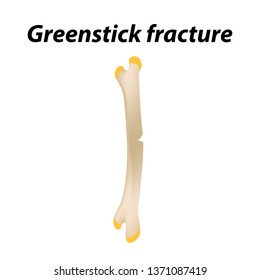Brace On Your Own For An Exploration Into The Captivating Mobile Communications Of Cold Laser Treatment And Its Application Of Light As A Recovery System. Take A Deeper Study The Clinical Facets!
Brace On Your Own For An Exploration Into The Captivating Mobile Communications Of Cold Laser Treatment And Its Application Of Light As A Recovery System. Take A Deeper Study The Clinical Facets!
Blog Article
Staff Author-Dougherty Daley
You may have become aware of cold laser treatment as a promising therapy option for different problems, but have you ever wondered exactly how it really deals with a cellular degree? Comprehending the mechanisms behind this therapy can shed light on its efficiency in promoting healing and minimizing inflammation. By exploring the science behind cold laser treatment, you'll get insights right into the interesting ways in which light can affect mobile processes and help with tissue repair work.
Just How Cold Laser Therapy Works
To comprehend just how cold laser therapy functions, you need to comprehend the fundamental concepts of how light power communicates with biological cells. Cold laser treatment, likewise referred to as low-level laser treatment (LLLT), uses particular wavelengths of light to penetrate the skin and target hidden tissues. Unlike laser age spot removal used in surgical procedures, cold lasers send out low degrees of light that don't generate warm or trigger damages to the cells.
When these gentle light waves reach the cells, they're absorbed by components called chromophores, such as cytochrome c oxidase in mitochondria. This absorption activates a collection of organic reactions, consisting of increased cellular power manufacturing and the launch of nitric oxide, which enhances blood circulation and lowers swelling.
Furthermore, the light power can likewise stimulate the production of adenosine triphosphate (ATP), the power currency of cells, helping in mobile repair service and regeneration processes.
Basically, visit site takes advantage of the power of light energy to promote recovery and alleviate pain in a non-invasive and gentle fashion.
Devices of Action
Exactly how does cold laser treatment actually work to generate its healing impacts on biological cells?
Cold laser therapy, also known as low-level laser treatment (LLLT), runs via a process referred to as photobiomodulation. When the cold laser is applied to the skin, the light energy permeates the cells and is taken in by chromophores within the cells.
These chromophores, such as cytochrome c oxidase in the mitochondria, are after that stimulated by the light energy, leading to a cascade of organic reactions. One key mechanism of action is the improvement of cellular metabolism.
The absorbed light power increases ATP production in the mitochondria, which is crucial for cellular function and repair. Furthermore, cold laser treatment assists to lower inflammation by inhibiting inflammatory moderators and advertising the launch of anti-inflammatory cytokines.
This anti-inflammatory effect adds to pain relief and cells healing.
Therapeutic Results
Understanding the healing impacts of cold laser treatment includes recognizing just how the improved mobile metabolic process and anti-inflammatory residential properties contribute to its positive end results on biological tissues.
When the cold laser is put on the afflicted location, it boosts the mitochondria within the cells, resulting in boosted manufacturing of adenosine triphosphate (ATP), which is important for cellular function and fixing. This increase in mobile energy accelerates the recovery procedure by advertising cells regeneration and lowering swelling.
Furthermore, the anti-inflammatory buildings of cold laser treatment assistance to decrease pain and swelling in the targeted location. By hindering inflammatory conciliators and advertising the launch of anti-inflammatory cytokines, cold laser therapy aids in alleviating discomfort and boosting the general healing response.
This decrease in inflammation not just gives immediate relief however also supports long-term tissue fixing.
Verdict
Finally, cold laser therapy works by boosting mobile repair work and tissue regeneration via photobiomodulation. Its anti-inflammatory buildings offer pain alleviation and lower swelling by hindering inflammatory arbitrators.
This therapy offers an extensive strategy to recovery, delivering both prompt relief and long-lasting tissue repair service benefits.
With its devices of action, cold laser treatment proves to be a reliable and appealing treatment alternative for a range of conditions.
